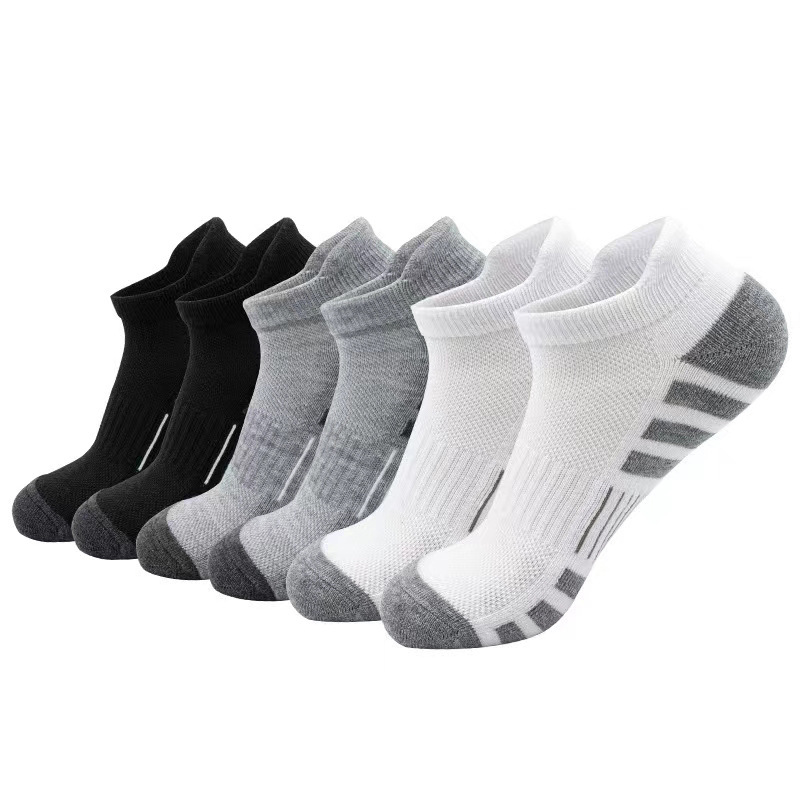

Socks are an often-overlooked finishing touch that can subtly make or break a professional outfit. Beyond aesthetics, the right sock affects comfort, shoe-life, and perceived polish. A mismatched material, incorrect length, or an obvious pattern at the ankle can draw unwanted attention in meetings or presentations. This guide focuses on practical, actionable advice—materials, lengths, colors, performance features, fit, and care—so you can select socks that complement formal and business looks while lasting longer and feeling better all day.
Material choice determines breathability, drape, durability, and how the sock sits inside a dress shoe. For business and formal settings, prioritize fabrics that balance comfort with a refined appearance.
Mercerized cotton has a subtle sheen and smoother surface which pairs well with dress shoes. Blends that include a small percentage of nylon or elastane add durability and stretch while preserving a dressy look. Choose mid-weight cotton blends for year-round wear.
Fine merino wool is breathable, temperature-regulating and resists odor—making it excellent for colder months or air-conditioned offices. Lightweight merino works year-round and has a natural drape that reads as high-quality and refined.
Pure silk has a luxurious sheen ideal for very formal settings (black tie). Silk blends combine silk with cotton or synthetics to improve resilience while keeping a dressy finish. These are less durable than blends with nylon but excel in elegance.
Nylon, polyester, and high-tech yarns are often blended into dress socks to improve elasticity, abrasion resistance, and moisture-wicking. Look for blends where synthetic fibers are present in small amounts to maintain a refined appearance while boosting longevity.

Length and a secure fit are essential in business contexts. You should never expose bare skin when sitting or crossing your legs—choose lengths and fits that stay put without constricting circulation.
Over-the-calf socks are the gold standard for formal occasions. They guarantee coverage while seated and create a smooth, uninterrupted line between shoe and trouser. They often include a reinforced top band to prevent slippage.
Crew socks are acceptable in many business environments and offer a modern look with slightly less formality than OTC. Ensure the elastic is comfortable and that the sock remains at mid-calf while moving.
Avoid no-show or ankle socks with formal suits or business attire. These reveal skin when you sit and undermine a polished appearance. Reserve no-shows for casual sneakers or summer loafers outside strict dress codes.
Color and pattern should complement—not compete with—your suit and shoes. Follow simple pairing rules to maintain a professional look.
High-quality dress socks include thoughtful technical details that improve comfort and durability without sacrificing dressiness.
Season affects both material choice and sock thickness. Selecting the appropriate sock by season improves comfort while maintaining a formal look.
Choose lightweight mercerized cotton or thin merino blends. Avoid heavy knits and thick cushioning which create bulk inside slim dress shoes.
Mid-weight merino or wool blends provide insulation without looking bulky. Wool’s temperature-regulating properties make it ideal for fluctuating indoor/outdoor conditions.
Use these practical tips when shopping to avoid common pitfalls and ensure a smart purchase.
| Type | Best Use | Pros | Cons |
| Mercerized Cotton Blend | All-season office wear | Smooth finish, affordable, breathable | Less insulating in cold weather |
| Merino Wool | Cold seasons & long days | Warm, odor-resistant, breathable | Higher cost; occasional pilling |
| Silk Blend | Formal events, dressy suits | Luxurious sheen, thin | Delicate; less durable |
Proper laundering and rotation extend the life of your dress socks and maintain their appearance.
For the majority of business needs, invest in a small rotation of high-quality over-the-calf socks in neutral colors and a couple of subtle patterned pairs. Choose mercerized cotton blends for year-round use, merino for colder months, and silk blends for the most formal occasions. Pay attention to fit, reinforced construction, and care instructions—these are the factors that will keep socks looking crisp and professional over many wears.
Well-chosen socks are an inexpensive way to elevate your professional appearance and improve daily comfort. When in doubt, favor coverage, subtlety, and quality over trend-driven novelty—your outfit (and your colleagues) will thank you.